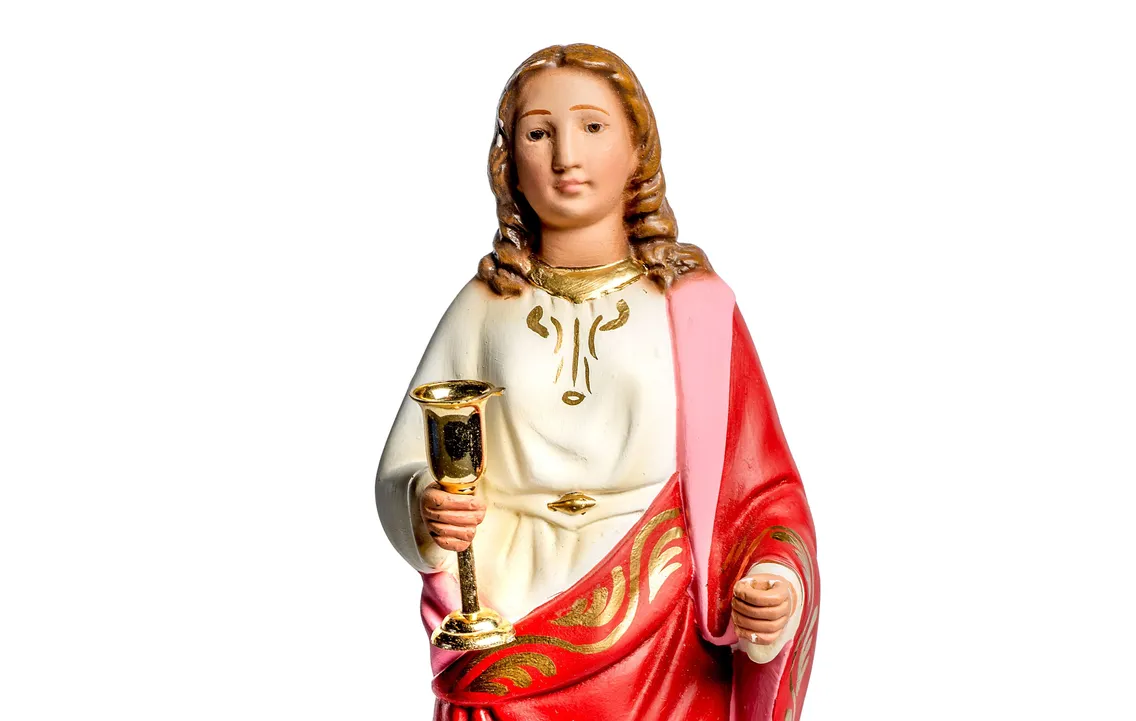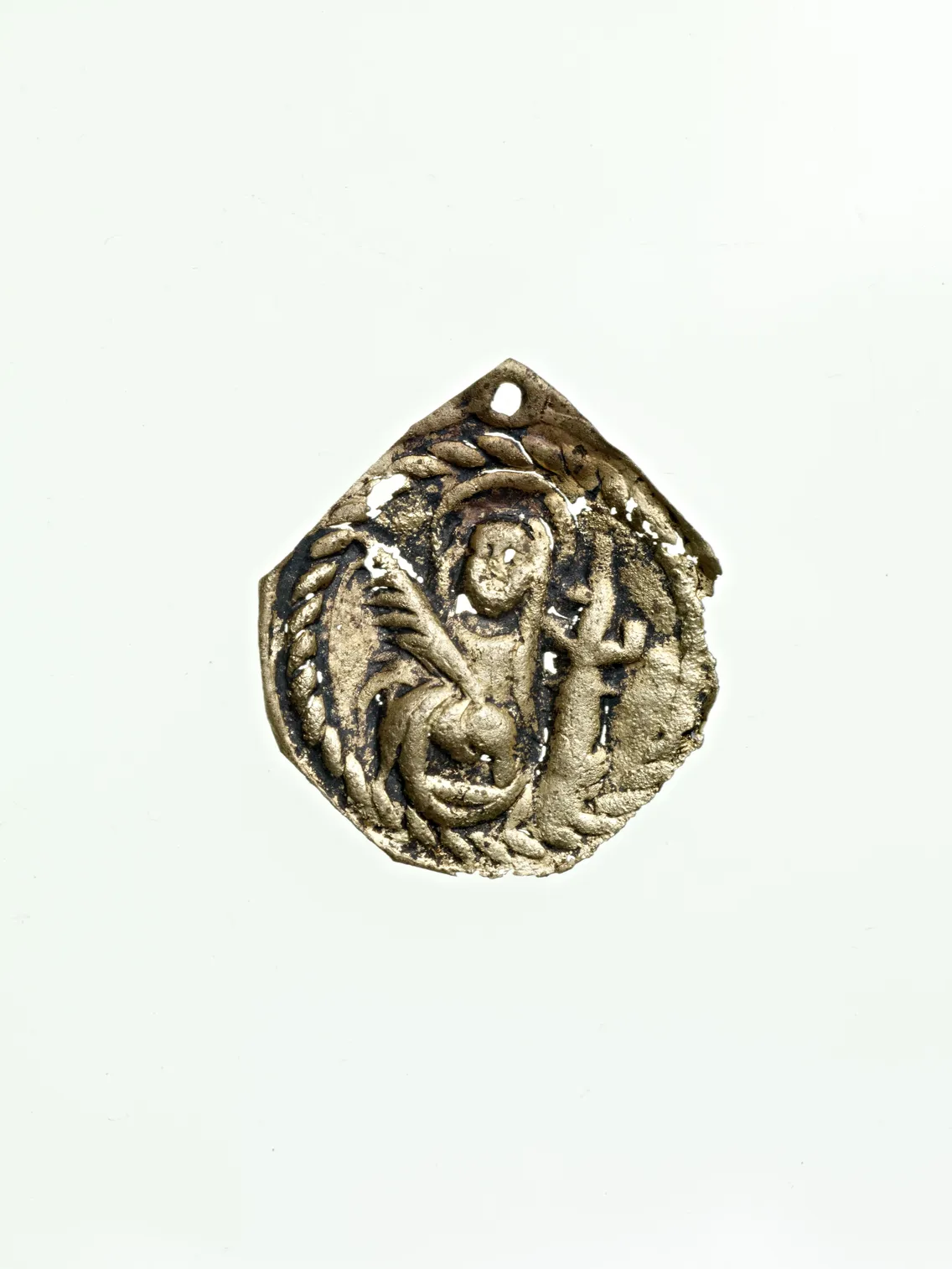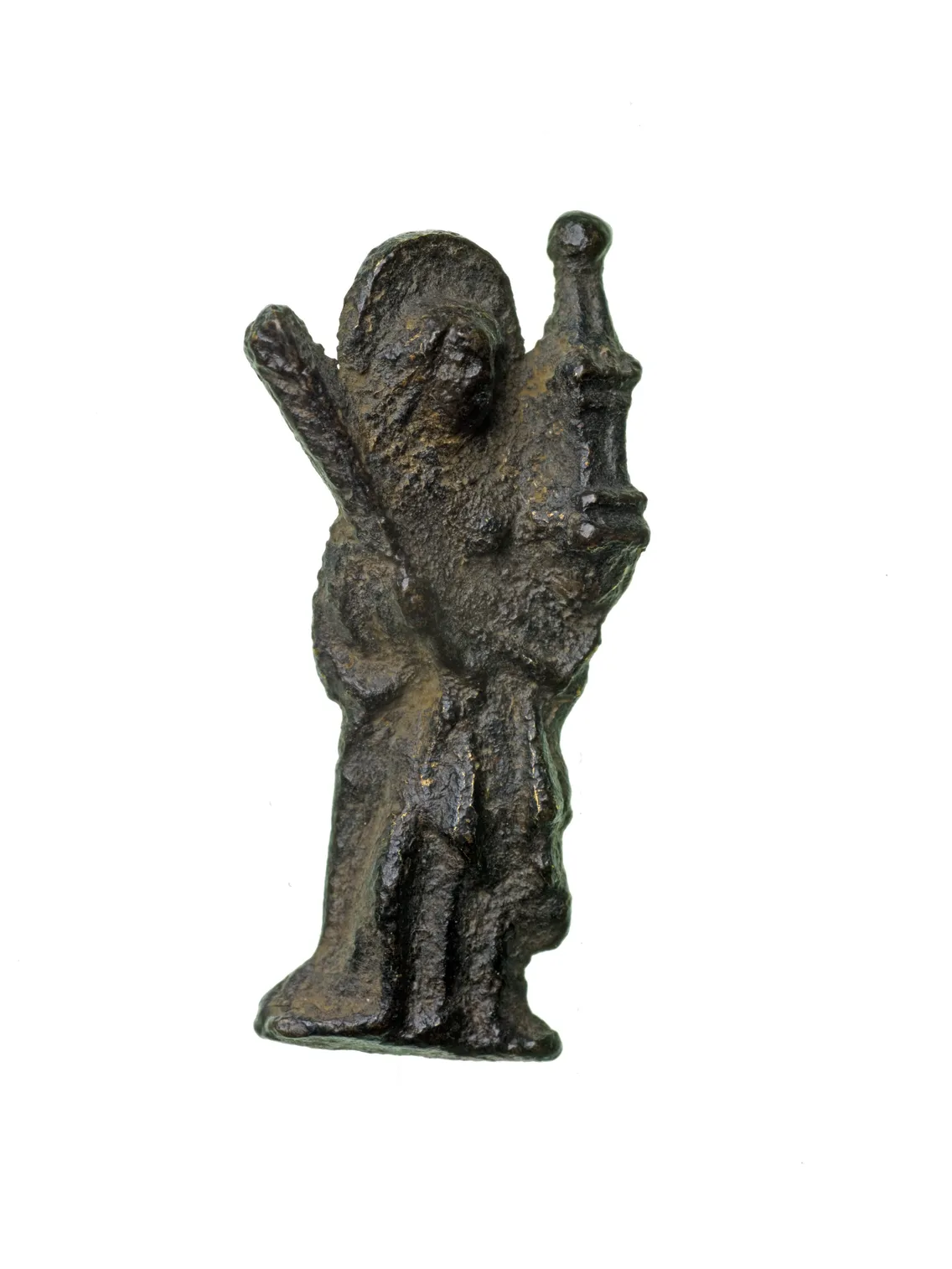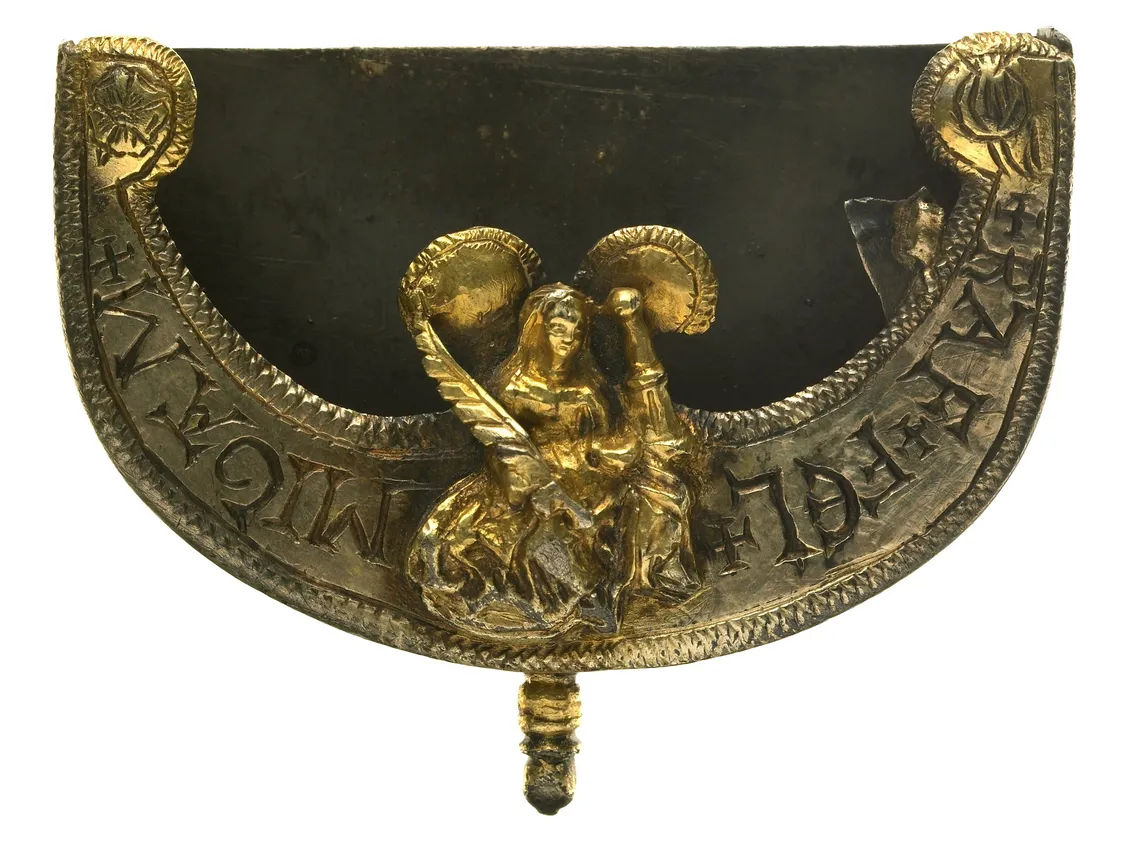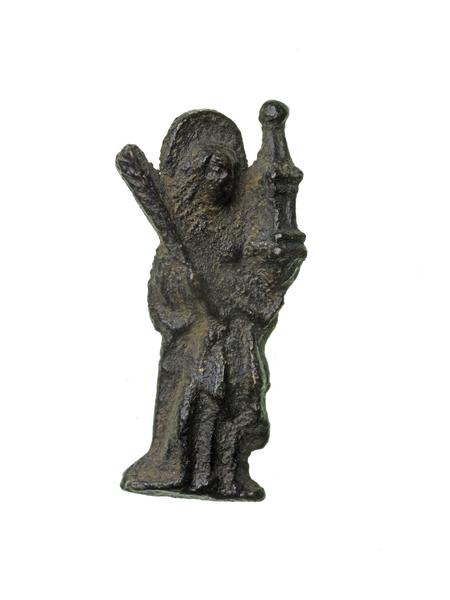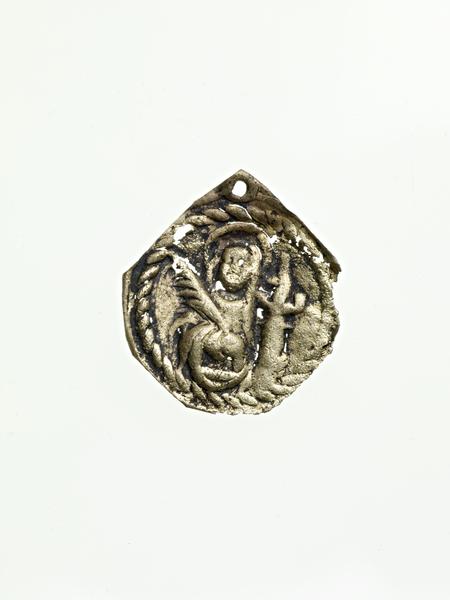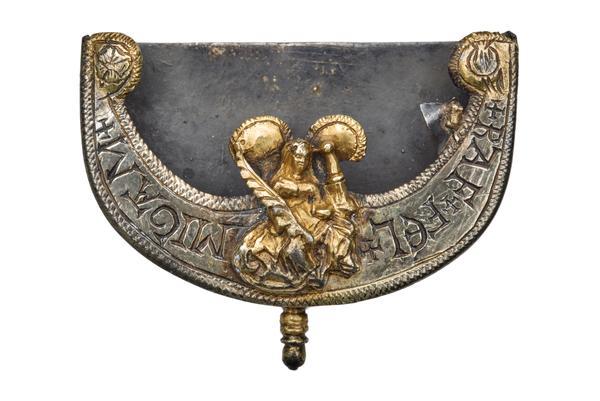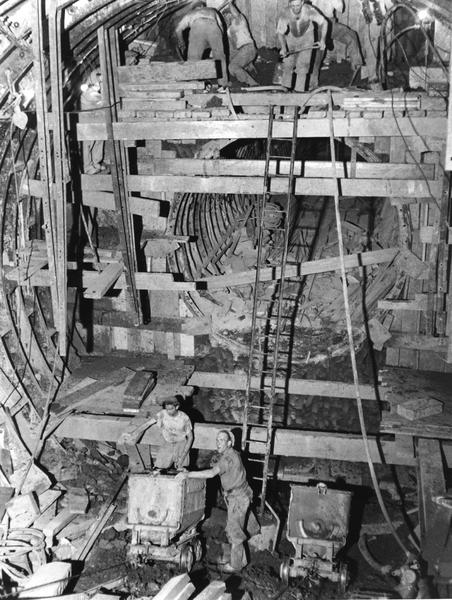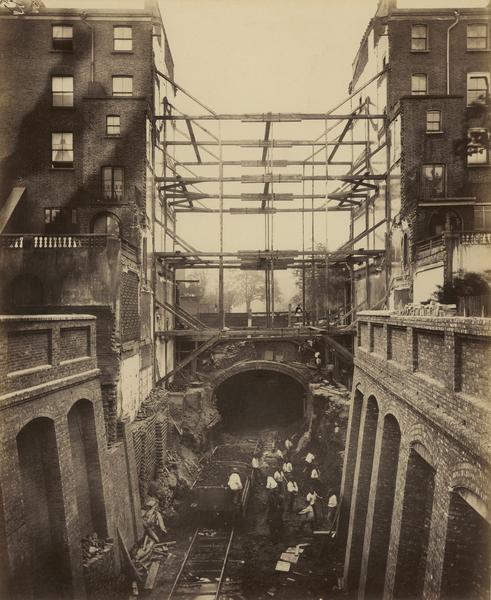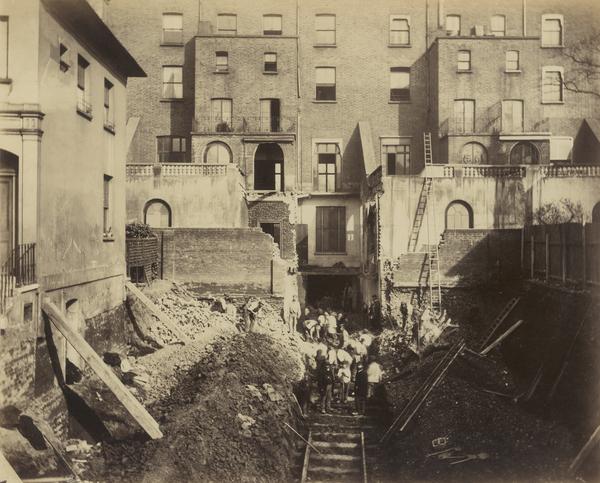St Barbara: Guardian of the Crossrail tunnel
The workers digging the tunnel for London’s Elizabeth Line kept the statue of a medieval saint nearby for protection. This is the story of St Barbara.
Elizabeth Line
2009–2022
Patron saint of miners
The Crossrail project to construct the Elizabeth line saw enormous tunnel boring machines chewing a vast hole deep beneath London.
Not everything underground was so monstrous and mechanical though – for protection, workers placed a small plaster statue of Barbara, an early Christian saint, in the entrance shaft.
Barbara is the patron saint of tunnellers, miners and much more. She’s been a popular figure since the Middle Ages, and her image crops up on many different objects in our collection.

Workers celebrating after a Crossrail tunnel boring machine breaks through in Stepney Green Cavern, January 2014.
Who is Saint Barbara?
Barbara is believed to have lived in the 3rd century CE in the eastern Mediterranean, probably in modern Turkey or Lebanon. The story about her life is a violent one.
Barbara was the daughter of a wealthy man who, afraid that she might misbehave, locked her in a tower whenever he went away.
During one of his trips, Barbara secretly converted to Christianity. When her father had a bathhouse built for her, Barbara asked the builders to place three windows in it to symbolise the Holy Trinity of the Christian church.
Her father was furious when he saw the windows and reported her to the authorities. She was arrested, tortured and sentenced to death by beheading.
Her father did this himself with his sword. He was then struck by lightning and killed, and his body set on fire. This was said to be God’s revenge.
What does St Barbara symbolise?
Barbara is associated with thunder, lightning and sudden death.
She’s first mentioned as a saint in the 7th century, but became increasingly well known from the 9th century on, and often appears in medieval works of art.
In the 14th century she was recognised as one of the Fourteen Holy Helpers, a group of saints who were believed to protect against disease and sudden death.
Why is Barbara important to miners?
Her association with sudden death and lightning meant she was linked to the use of gunpowder when its use spread through Europe in the medieval period.
She became the patron saint for those who worked with explosives, such as artillery-men, military engineers and miners.
“The Spanish and Portuguese carried their respect for Barbara to the Americas”
Images of St Barbara
Her importance in the medieval church means she crops up on small portable souvenirs and badges that were worn by pilgrims in medieval Europe.
One object in our collection is a small copper-alloy disc. It shows St Barbara on one side holding the sword used to behead her, and a palm branch. This tree, associated with Jesus Christ, symbolises that Barbara is a martyr who died for her beliefs.
The reverse shows a letter “B”. The disc has a hole in it. It may have been sewn onto clothing or perhaps even into the pages of a prayer book.
Another object is part of a ceramic figurine of St Barbara. Such figurines of saints would have been common in London homes in the medieval period. This example shows St Barbara holding a palm and a tower, like the one she was locked in.
A Tudor marvel
However, perhaps the finest image of St Barbara in the London Museum’s collection appears on a small belt-end which belonged to Ralph Felmingham, a sergeant-at-arms to Henry VIII.
This protective covering for the end of a leather belt also features the symbols of Henry VIII and Katherine of Aragon – a rose and a pomegranate.
The Barbara figure on it is tiny, and is worked in wonderful detail in silver gilt.
Saint Barbara around the world
St Barbara is still extremely popular in certain parts of the world. In Poland, Germany and Austria her saint’s day, 4 December, is still celebrated, particularly among communities with a strong mining tradition. She also remains an important saint for the Eastern Orthodox Church.
The Spanish and Portuguese carried their respect for Barbara to the Americas in the 16th and 17th centuries. Santa Barbara in California is named after her.
The Crossrail statue in our collection
Barbara is still recognised as the patron saint of artillery-men, military engineers, armourers, fire-fighters, miners and tunnellers, as well as mathematicians and geologists.
In the 2010s, when the Crossrail project was digging the tunnels which would eventually become the Elizabeth line, we heard about the tunnellers’ tradition and asked to borrow one of the statues. Dragados, the company who constructed the Crossrail Eastern Running Tunnels, kindly decided to donate the statue to the museum.

The St Barbara statue which was place in the Queen Elizabeth line tunnel.
The small statue (just under 32cm in height) is made of plaster and is slightly chipped from her time in the main shaft at the Limmo Peninsula site in east London.
The tunnellers and miners passed her every day as they went to work. She still holds a plastic chalice in one hand, but the sword that was in her other hand is now missing.


